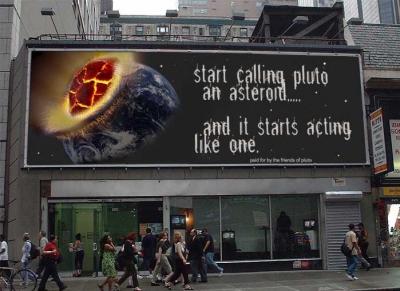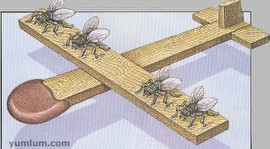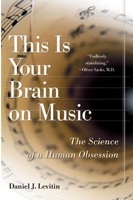Comics and Convergence Part One: "
This is the first of a series of outtakes -- passages written for Convergence Culture, but ultimately cut for reasons of length. Each represents a snap shot of convergence culture at work. Most of these sections were intended as side bars. Those of you who have read the book will know that it is structured around a series of core case studies that are developed in depth and sidebars which suggest other dimensionhs of the topic. Sidebars seemed like the most effective way of juxtaposing these other examples to the core discussion and seemed appropriate given the book's focus on the way we pull together information from multiple sources. What I like about the sidebars is that readers will engage with them at different points in the reading process as their own whims dictate and thus each reader's experience of the argument will be slightly different. Some will read them as they go; some will wait to the end of the chapter and then go back to read them, and so forth.
This section introduces comic books as a particularly rich site for understanding media change. As regular readers will note, I find comics a particularly interesting and relatively underexplored medium. Experiments in new approaches to popular storytelling often take place in comics -- the risks are relatively low both because of lowered cost of production and because of the fringe nature of their readership. At the same time, comics content is being drawn into the commercial mainstream. More and more recent films have been based on comics -- not simply predictible superhero fare such as X-Men, Batman Begins, or Spider-Man, but also off-beat independent films, such as American Splender, Ghost World, Road to Perdition, A History of Violence, and V for Vendetta, among others. I am a hardcore comics fan so you will be seeing lots of examples of trends from comics coming under my analytic gaze as this blog continues.
For those of you who own Convergence Culture, you can always print out these sections and tap them inside your book to assemble your own director's cut edition. :-) For the rest of you, these will give you a taste of the style and structure of the book.
Once mainstream, comics are increasingly a fringe (even an avant garde) form of entertainment, one that appeals predominantly to college students or college-educated professionals. While few read comics, their content flows fluidly across media platforms, finding wide audiences in film, television, and computer games. Something like twenty times the number of people went to see the Spider-Man movie its opening day than had read a Spider-Man comic the previous year. As Avi Arad, the head of Marvel's film division, explains, 'You can't do $155 million with just Marvel geeks.' Comics creators are torn between the desire to create content which will attract mainstream interest ( to sell it off to other media companies and to broaden their own readership) and producing content which appeals to and retains their hardcore readers.
Comics have entered a period of experimentation, testing new themes, adopting diverse styles, and expanding their genre vocabulary. Because the cost of production and thus the price of experimentation is much lower in comics than in any other medium, film and television monitor comics, searching for material which can be brought from the fringes into the mainstream. The turnaround between conception and distribution is much shorter in comics with the result that they will be among the first media to respond to new cultural developments. Comics now function, as longtime DC Comics editor Dennis O'Neil has commented, as 'The R&D Division' for the rest of the entertainment industry. And for that reason, many dimensions of convergence are felt first in comics.
Comics are media hybrids, combining words and images (including both representations and symbols). Not all comics have words and some artists pride themselves on telling stories purely through images. The relative prominence of words and images shifts across the history of the medium with early comics being much more text-centered - though some argue that this reversed itself when the size of newspaper comics shrunk, making it harder for readers to process more detailed images. At different moments in the medium's history (and at different companies), scripts emerged first from writers and were subsequently illustrated or scripts emerged by artists drawing panels which were subsequently retrofitted with dialogue. And in some cases, the same artist writes and draws the comic, often creating a greater integration of words and images.
Pictorial storytelling has been ignored within common periodizations of media history which discuss a general evolution from orality to literacy, from literacy to print, and from print to mass media. Less gets said about the way that pictorial media supported oral storytelling (as is currently believed to be the case with cave paintings or in the sand paintings done by some Arab storytellers to illustrate their tales) or helped to mediate between oral and text-based cultures (as in the case of stainglass windows and tapestries during the middle ages). Most of us have a fairly narrow definition of what we mean by comics - the short strips focused on cute children and funny animals found in the daily newspaper and the longer stories focused on superheroes found at a comic book store. Scott McCloud, the comics theorist and practitioner, has argued for a more expansive definition: 'juxtaposed pictorial and other images in deliberate sequence.'
McCloud argues that there is nothing preordained about the current selection of genres which dominate comics. Indeed, comics took on different kinds of content, built on different aesthetic traditions, reached different audiences, and achieved different cultural status in Japan or in France than in the United States. Moreover, comics are not inherently bound to print culture and McCloud identifies a range of different delivery mechanisms for sequential arts: 'A close reading of various ancient works yielded far more than a passing resemblance to comics. Whether decorating the walls of a painted tomb, spiraling in bas-relief up a stone column, parading across a 230-foot tapestry, or zigzagging across an accordion-folded painted deerskin, such works were, despite their exotic styles, comics to the core, telling stories in deliberate sequences of pictures....Ink on paper is just one of the physical forms comics can take, but it's the one form many feel most comfortable calling 'comics'.'
Comics, then might be characterized less as a medium than as a mode of expression, cutting across not only different delivery mechanisms (the newspaper supplement, the printed comic book, the carved column, the tapestry) but also across multiple media (print, digital). In that sense, comics share something in common with poetry, which has moved across oral culture, print culture, and digital culture while preserving its own distinctive traditions.
Many familiar aspects of comics - such as panel borders or the left to right and up to down reading protocols or the use of word balloons or the continuation of protagonists across multiple stories - emerged from the specific properties of print culture. These protocols have a certain inertia, in so far as we think about emerging media through the filters of older media practices but they are also subject to change, in so far as each medium creates different working conditions and different markets. On one level, comics have enjoyed enormous continuity with some recurring characters - Batman, Superman, Wonder Woman, Captain America, for example - appearing more or less continuously for sixty years or more. On another level, little else remains the same in comics across that period. Changes in how comics are published, where they are distributed, who reads them, and how they are regulated, have an enormous impact on how the stories of these characters are told.
In his book, Reinventing Comics, Scott McCloud argues that digital media may be the best - and perhaps the last - hope for comics to find a larger reading public, having cut themselves off from mainstream visibility through their dependence upon specialty shops as their primary distribution venues. McCloud imagines a world where independent comic artists sell their products directly to the consumer without confronting any middle men or gatekeepers, where more diverse comics content can find audiences well beyond the hardcore comics readers, and where the formal vocabulary of comics can expand, freed from the limits of the printed page. McCloud's book embraces elements of supercession and liberation. As McCloud argues, 'Not every creator can expect to strike it rich in the new market, but every individual vision of comics will at least get its day in the sun. Comics designed to reach out to non-fans will no longer have to hide where only fans will see them but instead will connect with their true market and in time, comics can begin to earn the diverse audiences it so desperately needs.'
The web has emerged as an important publicity and distribution channel for comics - though ironically, so far, the companies making the most money have been local specialty shops, such as Denver's Mile High Comics, which have seen cyberspace as a means of expanding their market. 75 percent of its sales come from online visitors to a site that receives 12 million hits per month. Such sites put comics in the reach of many who do not live in close proximity to comic shops, though they are also forcing some local shops out of business. As they reach a national market, these online retailers are particularly good sources for back issues, buying them from one consumer and marketing them to another. The major comics companies - Marvel and (the now defunct) CrossGen in particular - have experimented with making some of their comics content available on the web. Marvel boasted 1.3 million downloaded 'dot-comics' per month at the peak of the site's success. Most established comics creators use their home pages to communicate more directly with their fans and to get immediate reactions to their work. The discussion forums on such sites are so popular that many comic books have discontinued their longstanding practice of publishing readers' letters, feeling that these missives will go out of date by the time they are printed.
By some estimates, as many as 3000 independent comics artists have chosen to begin their careers in digital comics. In some cases, they target readers who would not typically enter a comic shop. Tak Toyoshima's Secret Asian Man, for example, is one of a number of comics which targets the Asian-American community. In some cases, these comics have proven their market value and been picked up by a comic book publisher. A notable recent success was Scott Kurtz's PvP,/ a web comic on role-playing and computer games, which is now being printed. Others become successful in web-based syndication. Astounding Space Thrills (currently off-line), for example, appears on more than 3000 web sites, each of which pays to support the production of new content. Most such comics are labors of love or designed to pave the way for commercial success, yet, so far, comics artists have had difficulty getting paid for the work they distribute online.
"
(Via Confessions of an Aca/Fan: The Official Weblog of Henry Jenkins.)















 'NO SNAKES OF ANY KIND WILL BE PERMITTED ON A PLANE. SNAKES ARE NO LONGER ALLOWED IN CHECKED BAGGAGE. This includes all pythons, boas, rattlesnakes, vipers, mambas, adders, and other known species of snakes.
'NO SNAKES OF ANY KIND WILL BE PERMITTED ON A PLANE. SNAKES ARE NO LONGER ALLOWED IN CHECKED BAGGAGE. This includes all pythons, boas, rattlesnakes, vipers, mambas, adders, and other known species of snakes.


